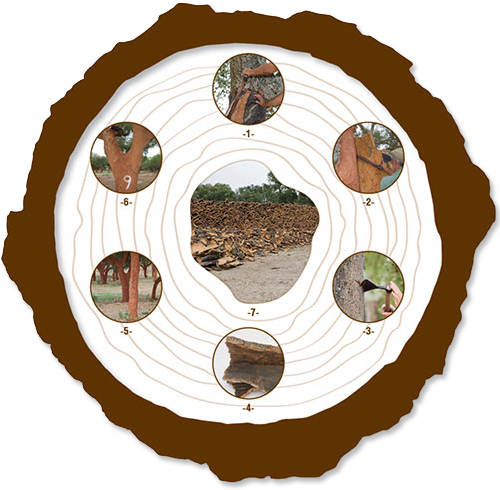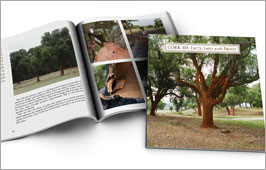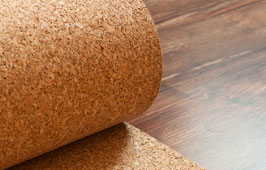
The cork oak (quercus suber) is a medium-sized evergreen oak tree native to Southwest Europe and Northwest Africa. There are about 5.4 million acres of cork forest worldwide, with 33% located in Portugal and 23% in Spain. Annual production is about 340,000 tons: 53% from Portugal, 32% from Spain, and 6% from Italy. Portugal produces approximately 50% of cork harvested annually worldwide.
Cork tree forests cover the surface of almost 5.4 million acres in seven Mediterranean countries including Portugal, Spain, Algeria, Morocco, Italy, Tunisia and France. These trees are synonymous with this region, and they represent one of the best examples of the development of the multi-functional forest. This landscape supports a rich diversity of wildlife, including the Iberian lynx, imperial eagle and Barbary deer, alongside farmlands, to create a unique balance between man and nature. The cork forest serves a valuable ecological function by providing soil conservation, water table recharge, and run-off control, while also buffering against climate change and desertification.
The cork oak landscapes help reduce greenhouse gases because the trees store large amounts of carbon, especially in their early years, which is when they grow the fastest. The Andalusian forests in Spain store more than 150 million tons of carbon dioxide, and cork oak trees are responsible for nearly 11 percent of this total. Cork oak trees store carbon in order to regenerate their bark, and a harvested tree absorbs up to five times more carbon than a non-harvested tree.
HARVESTING
Cork has been harvested for centuries and is one of the finest examples of traditional, sustainable land use that offers a viable livelihood for future generations. The care and harvesting of cork is a highly-skilled business in the western Mediterranean, where each generation has tutored the next in a continuous process from the time of the ancient Greeks.
Harvesting of the outer bark of the cork oak tree (not the trunk) occurs every nine to 12 years in the late spring and early summer when the cells are turgid and fragile and tear without being damaged. The tougher cork is used for flooring and insulation, while the supple, even-structured cork is used for wine closures. A tree typically requires 25 years of growth before it produces the quality of cork used for wine closures, but it will provide a harvest for some 200 years.


OPENING
The trunk is slashed vertically on a prominent fissure. Simultaneously, with a twist of the ax, the cork board is separated from the bark. It is possible to estimate the extraction difficulty from the ax blow. If it sounds hollow, it will be easy harvesting. When the blow sounds dry, it may imply a tougher extraction.
2. SEPARATING
The cork board is separated from the trunk by inserting the edge of the ax between the tree and the bark.
3. DELINEATING
With a horizontal cut, the cork board size is outlined. This is the only moment during harvesting that may inflict some light damage to the bark and may result in some changes to the trunk geometry.
4. EXTRACTION
The cork board is carefully extracted from the tree so that it doesn’t break. The bigger the board is, the more valuable it will be. After the first board is extracted, the process is repeated until all usable cork is taken from the oak.
5. UNSHOE
After extraction, the tree is left with a cork skirting around its trunk base.
6. MARKING
The tree is marked in white paint with the extraction year’s last digit to keep track of the next harvest. Every nine years, a new layer of cork will be ready for extraction.
7. REST
After harvesting, the boards are stacked in the forest or near the plant. They stay exposed to open air, sun and rain. The stacking of the bark follows very strict rules with the resting period lasting a minimum of six months.





